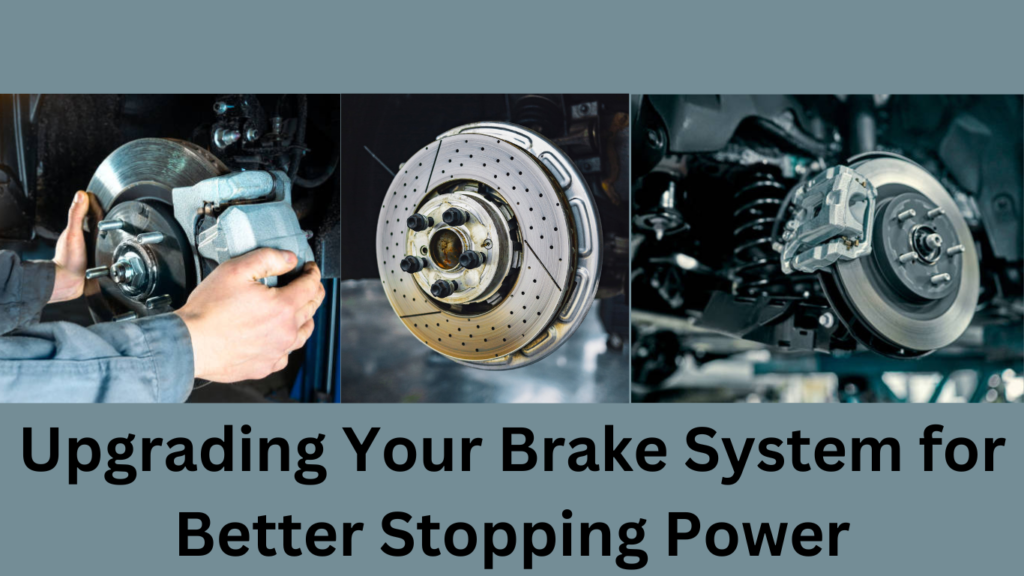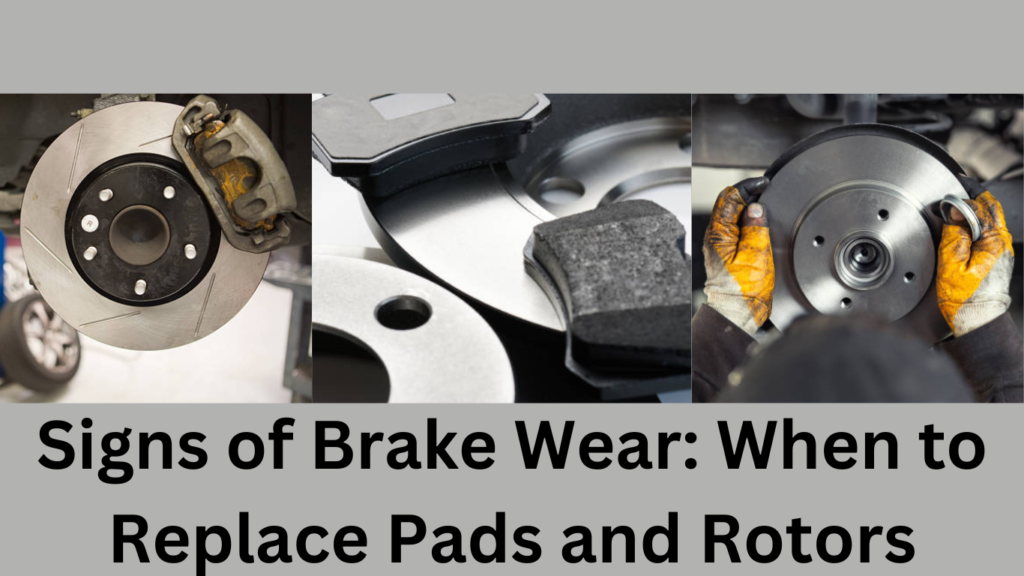Introduction
When it comes to your car’s safety, few components are as critical as the brakes. They are the unsung heroes of your vehicle, ensuring you come to a safe stop when needed. Whether you’re a car enthusiast, a daily commuter, or someone who enjoys the open road, upgrading your brake system for better stopping power can be a game-changer in terms of safety and performance. In this guide, we’ll explore the importance of having a reliable brake system, signs that it’s time for an upgrade, and the various options available for improving your stopping power. Get ready to take control of your vehicle’s safety and performance like a true car enthusiast.
1) The Importance of Reliable Brakes
Before we dive into upgrading your brake system, let’s understand why brakes are so crucial. Your brakes are the primary mechanism that keeps you and your passengers safe on the road. Here are some key reasons why reliable brakes are non-negotiable:
1.1) Safety First
In emergencies or during sudden stops, your brakes are your best friend. They can be the difference between avoiding an accident and being involved in one. Reliable brakes provide the confidence and peace of mind you need behind the wheel.
1.2) Enhanced Handling
Effective braking is not just about stopping; it’s also about control. Upgraded brakes can improve your vehicle’s handling, allowing you to maneuver more precisely and confidently, especially in challenging driving conditions.
1.3) Extended Component Life
Quality brake components, when properly maintained, can also extend the lifespan of other parts of your vehicle. Well-maintained brakes reduce the strain on other systems, saving you money in the long run.
2) Signs It’s Time for an Upgrade
Now that we’ve established the importance of reliable brakes, let’s discuss the signs that indicate it’s time for an upgrade. If you notice any of the following issues, it’s a clear indicator that your brake system may need attention:
2.1) Reduced Stopping Power
If your vehicle takes longer to come to a complete stop or you find yourself needing to apply more pressure to the brake pedal, it’s a sign that your brakes may be worn out or that your braking system is not performing optimally.
2.2) Spongy Brake Pedal
A soft or spongy brake pedal can indicate air or moisture in the brake lines. This not only compromises your braking performance but also poses a significant safety risk.
2.3) Brake Fade
If your brakes become less effective when they get hot, such as during prolonged downhill descents or spirited driving, it’s a sign of brake fade. This phenomenon can be dangerous, especially if you’re driving in hilly or mountainous regions.
2.4) Unusual Noises
Squeaking, squealing, or grinding noises when you apply the brakes are signs of worn brake pads or damaged brake components. Ignoring these sounds can lead to more expensive repairs down the road.
2.5) Uneven Brake Wear
If your brake pads wear unevenly, it can be a sign of caliper or rotor issues. Uneven wear not only affects braking performance but can also lead to costly repairs if left unaddressed.
3) Upgrading Your Brake System: Options and Considerations
Now that you’re aware of the signs indicating it’s time for an upgrade, let’s explore your options for enhancing your brake system and improving your stopping power. Consider the following factors when making your decision:
3.1) Brake Pad Upgrades
One of the most common and cost-effective brake upgrades is replacing your stock brake pads with high-quality, performance-oriented ones. There are three main types of brake pads to consider:
3.1.1) Organic Brake Pads
Organic brake pads, often referred to as non-metallic or semi-metallic pads, are made from a combination of organic materials and friction modifiers. They provide smooth and quiet braking but may wear out faster than other types.
3.1.2) Ceramic Brake Pads
Ceramic brake pads are known for their low noise and dust levels. They also offer excellent stopping power and durability. However, they tend to be more expensive than organic pads.
3.1.3) Performance Brake Pads
Performance brake pads are designed for enthusiasts who demand maximum stopping power. These pads can handle higher temperatures and provide superior braking performance, making them ideal for spirited driving or towing.
3.2) Brake Rotor Upgrades
Upgrading your brake rotors can significantly enhance braking performance. Consider the following rotor options:
3.2.1) Drilled Rotors
Drilled rotors have holes drilled into them to improve heat dissipation and reduce brake fade. They can enhance braking performance, especially during high-speed driving. However, they may be prone to cracking under extreme stress.
3.2.2) Slotted Rotors
Slotted rotors have grooves or slots cut into them, which help dissipate heat and gas buildup. They are less prone to cracking than drilled rotors and are suitable for both street and occasional track use.
3.2.3) Performance Rotors
Performance rotors, often made from high-quality materials like carbon or reinforced with carbon fiber, offer the ultimate in braking performance and heat resistance. They are a top choice for high-performance and racing applications.
3.3) Brake Caliper Upgrades
Upgrading your brake calipers can have a significant impact on stopping power and heat dissipation. Consider the following options:
3.3.1) Caliper Painting
A simple and cost-effective way to enhance the look of your brake system is by painting your calipers. While this won’t improve braking performance, it can give your car a sportier appearance.
3.3.2) Performance Calipers
Performance calipers are larger and sturdier than stock calipers. They often have multiple pistons and larger brake pads, providing improved clamping force and better heat dissipation.
3.4) Brake Fluid Upgrades
Often overlooked but essential, brake fluid plays a crucial role in your brake system’s performance. Consider upgrading to high-performance brake fluid with a higher boiling point to prevent brake fade under heavy braking.
4) Professional Installation and Maintenance
While some brake upgrades can be done by experienced DIY enthusiasts, it’s essential to prioritize safety and ensure the work is done correctly. Professional installation ensures that all components are properly installed, bled, and torqued to the manufacturer’s specifications.
Additionally, regular maintenance is key to preserving the performance and longevity of your upgraded brake system. This includes regular brake fluid flushes, inspections, and brake pad replacements as needed.
Conclusion
Upgrading your brake system for better stopping power is a wise investment in both safety and performance. Whether you’re looking to improve your daily commute, enhance your driving experience, or prepare your vehicle for spirited drives or track days, there are options available to suit your needs and budget.
Remember to assess your current brake system, watch for signs of wear and degradation, and consult with a professional if you’re unsure about the right upgrades for your vehicle. With the right components and proper maintenance, you can enjoy improved braking performance and the peace of mind that comes with it every time you hit the road. Don’t compromise on safety and performance—upgrade your brake system today. Your car and your passengers will thank you for it.



